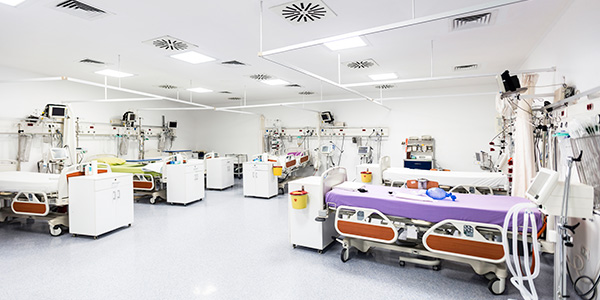 Lighting has always played an important role in the healthcare sector. For caregivers, changes to lighting design can decrease fatigue and improve alertness. For patients, the way lighting is used in different applications can lead to feelings of safety and comfort in a potentially stressful situation.
Lighting has always played an important role in the healthcare sector. For caregivers, changes to lighting design can decrease fatigue and improve alertness. For patients, the way lighting is used in different applications can lead to feelings of safety and comfort in a potentially stressful situation.
Yet today’s lighting systems have the potential to go one step further. As these systems have grown more sophisticated, smart lighting technology now allows hospitals and healthcare facilities to closely regulate how lighting is used (without adding more work for caregivers!).
This can be great for energy efficiency — for example, using smart lighting to switch lights off automatically when a room’s not in use. But there are exciting implications for patients as well. One fascinating application of this technology is the use of lighting automation to support the circadian rhythms of patients.
Here’s why that matters, and why it can lead to better outcomes for patients.
What Is Circadian Rhythm, and How Is It Affected by Light?
To understand how lighting automation can help support better patient outcomes, it helps to first understand something called “circadian rhythm.” This is the normal, 24-hour cycle your body goes through, which includes things like hormone production and your sleep-wake schedule. These things are all controlled by your hypothalamus, which in turn is affected by light.
Before the invention of artificial lighting, the hypothalamus regulated sleep based on daylight. When the sun sets, your hypothalamus secretes a hormone that helps make you sleep. As the sun rises again, that same process occurs in reverse to help you wake up.
How artificial lighting can disrupt circadian rhythms
The hypothalamus is great at its job when getting its cues from natural light. But what about in an artificial environment? In that case, the hypothalamus still uses light to try and regulate cycles, but these natural rhythms can become thrown out of whack by electric lights.
When you’re at home, this might not seem to matter so much — you can switch off the lights as you get ready for bed. But for a patient in a hospital setting, the lighting is often out of their control. As a result, their natural circadian rhythms can be thrown off kilter and it can become very difficult to sleep. And if this goes on for too long? It can make a serious impact on a patient’s health.
What Are the Health Risks of an Interrupted Circadian Rhythm?
When there’s a disruption to the body’s natural circadian rhythm, it can make it very difficult for a person to sleep. But disordered rhythms, whether caused by disease or by the environment, can lead to bad health outcomes that go well beyond simple insomnia. These can include:
- Weakened immune systems and higher vulnerability to contagious illnesses
- Heart problems and cardiovascular disease
- Cognitive and/or behavioral disorders, such as “sundowning” in patients with Alzheimer’s
- Digestive disorders
- Aggravation or worsening of other sleep disorders
All of these pose serious health concerns. But for a hospital patient coping with illness or injury, they can be of especially grave concern.
The effects of environment on patient recovery
There’s a growing body of research to support the idea that the healthcare environment itself can have a significant impact on the well-being of patients. Lighting, artificial or otherwise, is a significant piece of the equation, especially given what we know about how it affects the circadian rhythm. For best results, healthcare facilities should take pains to ensure that lighting works in concert with the body’s natural rhythms, rather than interrupting them.
Of course, that’s easier said than done! In a busy hospital setting, where caregivers already have so much on their plates, it can be hard to keep a close eye on lighting. Fortunately, lighting automation offers a solution that benefits patients and caregivers alike.
How Can Lighting Automation Help Improve Circadian Rhythms?
Even with the best of intentions, caregivers just don’t have the time or capacity to adjust the artificial lights in every room of a healthcare facility. There are too many competing priorities pulling them in too many other directions.
Yet given what we know about how light drives circadian rhythms, artificial lighting is an important thing for hospitals to get right. That’s why automation and smart lighting is such a potential gamechanger for healthcare. These facilities can now integrate smart lighting technology to have an unprecedented level of control over how and when lights are used.
This means that hospitals can program artificial lighting in a way that supports a patient’s sleep cycle. Instead of keeping patients awake and worsening health conditions, artificial lighting can actually be used as an important tool of recovery. While automated lighting offers many benefits — including cost savings and reduced energy consumption — its potential for improving patient outcomes may be the most important one.

